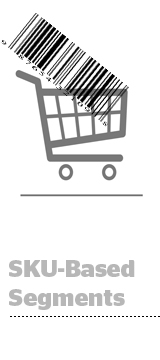 Nielsen Catalina Solutions (NCS) wants to build the most comprehensive set of shopper data out there, and it appears right on course.
Nielsen Catalina Solutions (NCS) wants to build the most comprehensive set of shopper data out there, and it appears right on course.
The company has expanded its shopper data set by 30%, fueled mostly by a new data partnership with Walgreens, NCS revealed to AdExchanger Wednesday.
This means Nielsen Catalina now has access to shopper data representing 90 million households, up from 70 million prior.
The goal is to develop a complete composite of shopper segments for consumer packaged goods and over-the-counter items, according to Adam Paulisick, Nielsen Catalina’s SVP of marketing and strategy.
“By adding more retailers and households, the idea is to get more targeted and eventually hold every impression in a programmatic media plan accountable to an incremental sale,” Paulisick said. “Unless you have a large base of retailers, there really is no way to get a read on smaller, niche or emerging products.”
In addition to direct hooks to 120 grocery and retail brands that include Walgreens, RiteAid, Supervalu and Safeway, Nielsen Catalina can access shopper data on big-box purchases at Walmart, Target and Sam’s Club based on a 100,000-person household panel through Nielsen Homescan.
One perceived limitation of shopper data sets is that they’re simply not representative of a broad enough swath of consumers. Historically, many data sets were affinity-based and limited to loyalty card members.
But discount shoppers aren’t the majority of the population, so brands clamor for more up-to-date, transactional data to get a clearer read on their purchasers.
“There’s an intensive process to synchronize data from multiple retailers and to match products sharing the same UPC (universal product codes),” Paulisick said. “You also have to negotiate a coop where you can mix data together in a privacy-compliant environment. Even if you have data from 10 retailers, it’s the same as only working with one if you can’t mix them together.”
In the case of Nielsen Catalina and Walgreens, Experian would perform a blind match between Walgreens data and NCS’s broader contextual data set so that neither party sees the other’s data asset. No PII is exchanged in the process and neither company could reverse-engineer information about an individual household.
Experian would then ascribe Walgreens purchases to certain households and NCS could comingle that anonymously with the rest of its retail data set.
In terms of what Walgreens brings to the table, NCS wanted to fill several important holes in its data set. In addition to boosting its over-the-counter medication, cosmetics and beauty UPCs, specifically, NCS saw more opportunity to augment mid-priced product data.
“Although there’s a certain degree of product – for instance, a several hundred-dollar cream – where we might not play, there are a lot of products that supercede grocery or gas station economics, which are becoming more prominent at places like Walgreens,” Paulisick said.
He added a store like Walgreens, which is a fast-mover with mobile apps and innovating in services beyond the physical store location, has evolved from a quick place to pick up a prescription to an all-inclusive destination, making it a unique addition to NCS’s data set.
For a total picture, NCS accesses data from 18,000 stores in 50 states, including Walgreens and beyond, which provide POS data that is onboarded daily. It has access to about 1.5 million UPCs and maintains a minimum of a two-year purchase history of each data set to account for seasonality in measurement.
“We want to be transparent about our data sources,” Paulisick reiterated. “A number of data companies describe the behavior associated with their segments without disclosing the source. We think that’s the first question marketers have.”














